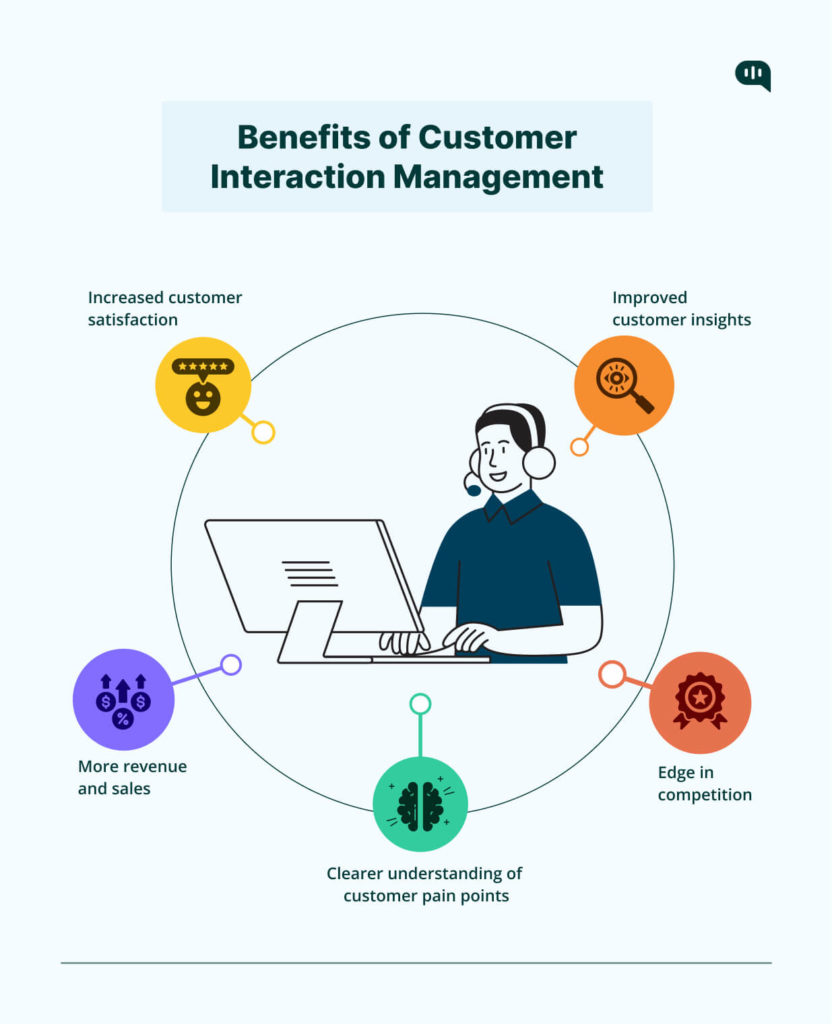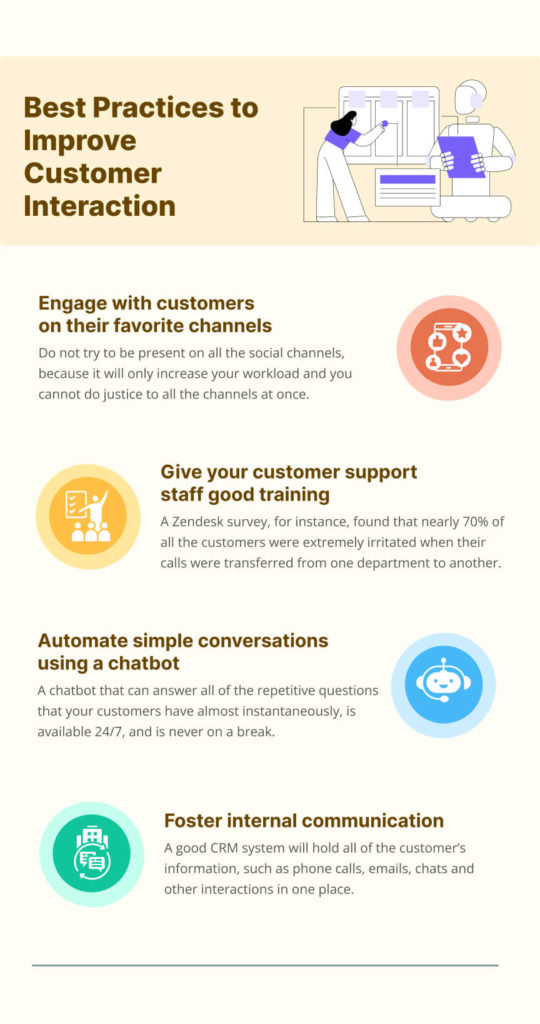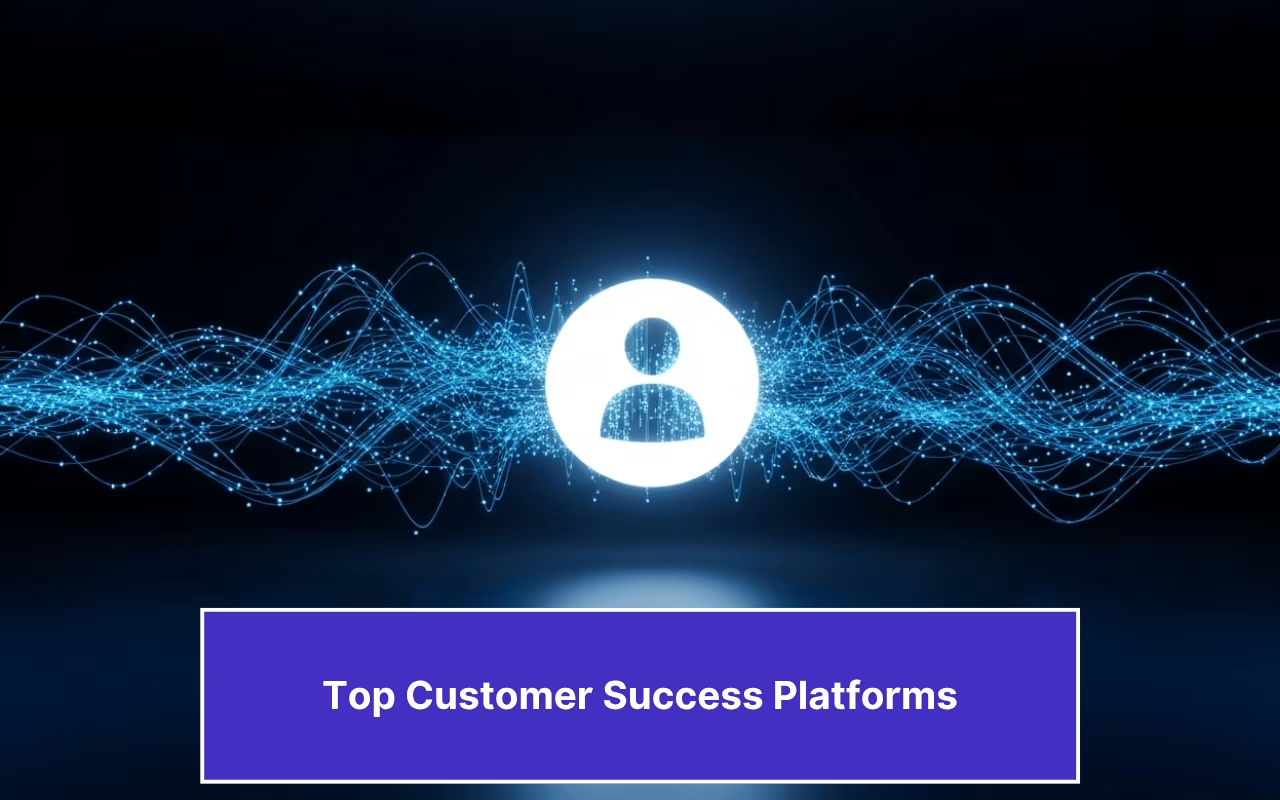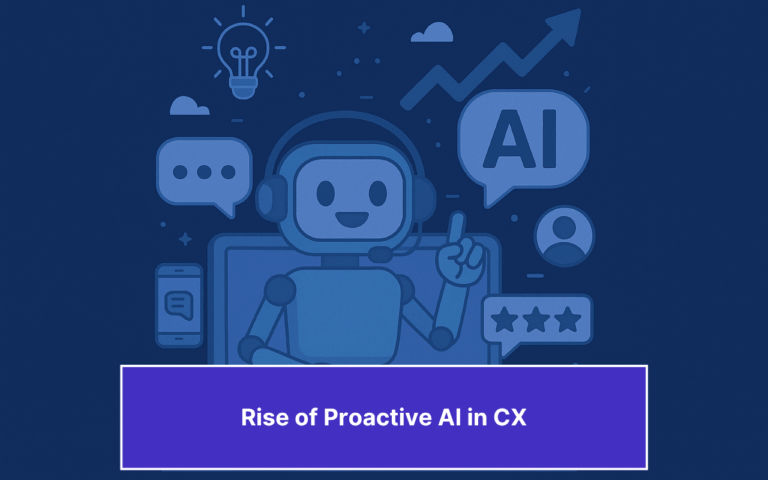Updated on June 12, 2024

In the digital age, AI-powered customer interaction management is the secret sauce for ultimate success. Every business should talk to its customers and talk well. If your customers do not like the way you communicate with them, they will simply walk away or, worse, purchase from the competitor. By leveraging customer service automation, businesses can enhance communication and streamline interactions across multiple channels.
And losing customers is a big concern, especially in the US. A CallMiner survey says that U.S. companies can save a whopping $35 billion per year by keeping their existing customers happy.

While you now know that providing great customer service is the key to lasting success, there are many terms here that are often used interchangeably but shouldn’t be.
Customer interaction, for instance, is not the same as customer experience. We are going to teach you the subtle difference between them, and more, in this blog post.
Among other aspects, we will cover:
- What is customer interaction management?
- Benefits of Customer Interaction Management.
- Best Practices for Customer Interaction Management
- Tech solutions for CIM
- Delivering a winning CIM program
Let us begin with the very basic definition of Customer Interaction Management.

What is Customer Interaction Management?
The way a business handles all its interactions, be it customers, early prospects, leads, or paid customers, across all its communication channels, comes under the umbrella term of Customer Interaction Management (CIM).
Did you reply to a LinkedIn post to a customer who tagged your company? That’s part of CIM. Ever used a chatbot to convey all your FAQs to your customers on your company’s homepage? Yup, that’s CIM too.
Any channel where you engage with your customer is part of your Customer Interaction Management Strategy. Keep in mind that customer interaction and customer experience are two very different things, often used interchangeably.
Here are the differences:
| Aspect | Customer interaction | Customer Experience |
| Focus | Emphasizes the quality and effectiveness of specific interactions or communication channels. | Focuses on the holistic, end-to-end experience and cumulative impact of all touchpoints and interactions. |
| Ownership | Specific teams may be assigned to take care of customer interactions, such as customer support or sales teams, responsible for handling individual channels. | Requires a cross-functional, company-wide approach, involving multiple teams and touchpoints. |
| Measurement | A more holistic methodology of measuring, such as individual customer satisfaction, loyalty, and lifetime value. | A more holistic methodology of measuring, such as individual customer satisfaction, loyalty and lifetime value. |
As you can see, there are subtle but important differences between customer interaction and customer experience.
So what are the benefits of customer interaction management? We explore this in the next section.
Benefits of Customer Interaction Management
Why is CIM important? Here are a few reasons:
1. Improved Customer Insights
Effective CIM programs involve analyzing customer data from various touchpoints, which will give valuable insights into customer behavior, pain points, and preferences. Businesses can thus make data-driven decisions, and continuously improve their offerings and services.
2. Edge in Competition
As an enterprise, if you deliver superior customer interaction, it can be a game changer for your organization, setting you apart from the competition. This competitive advantage will help you attract more customers while retaining existing ones.
You’ve got to keep reinventing. You’ll have new competitors. You’ll have new customers all around you.” — Ginni Rometty, Ex- IBM CEO
3. Increased Customer Satisfaction
A customer interaction that is consistent, personalized and efficient across all channels, will take customer satisfaction levels a notch up. Satisfied customers are more likely to remain loyal to the brand, as it leads to long term relationships and higher customer retention rates. Once you have a happy customer, you have them for life, according to this Acquia survey. According to the survey, 59% of Americans say that once they are loyal to a brand, they are loyal to it for life.

4. More Revenue and Sales
As a logical extension of the previous benefit, happier customers are more likely to tell their friends and family about your product, leading to increased sales and revenue. In addition to this, a good CIM strategy can also lead to more personalized experiences for your customers, which will increase upselling and cross-selling opportunities.
5. A Clearer Understanding of Customer Pain Points
The more you engage with customers and try to understand what makes them tick, the more likely you are to understand the chief points of friction with your product. Patterns will soon start to emerge about the needs and frustrations of your customers, and with a good CIM strategy in place, you can alleviate these pain points and improve the overall customer experience.
Other benefits of a good CIM strategy include a more vibrant and engaged customer community, improved operational efficiency, and improved employee satisfaction.
In the next section, we are going to see the best practices that enterprises can implement to improve customer interaction, which is a very important aspect of the overall customer experience.
Best Practices to Improve Customer Interaction
There are several ways enterprises can improve their customer interaction. Some of them include:
1. Engage with Customers On their Favorite Channels
One of the most important aspects of customer interaction is the platform on which you are going to engage with the customer. Do they prefer getting answers to their questions over a chatbot? Do they like self-service or FAQ options?
Trying to be present on all the social channels is a mistake since doing this will only increase your workload and you cannot do justice to all the channels at once. Instead, focus on channels where your customers are engaging the most.
For a large enterprise, this can be a formal setting, such as emails or Linkedin. If your customer base is younger, this can be over social media channels such as Instagram. By hanging out where your customers are, you are paving the way to building meaningful, long-term customer relationships.
2. Give Your Customer Support Staff Good Training
Continuously train all your customer support staff, who interact with the customer on a day-to-day basis. This will make sure that the customers have a good working relationship with your brand, with a unified customer experience.
A Zendesk survey, for instance, found that nearly 70% of all the customers were extremely irritated when their calls were transferred from one department to another. Giving your team active listening training and also teaching them how to de-escalate situations can go in a long way in promoting good customer interactions.
When customers have effective interactions with your brand, they turn into brand loyalists and ambassadors. Training your support staff is thus an important part of your CIM strategy.
3. Automate Simple Conversations Using a Chatbot
Want to boost employee productivity, while saving your customer’s time and improving their satisfaction levels? The answer is simple – chatbots. A chatbot that can answer all of the repetitive questions that your customers have almost instantaneously, is available 24/7 and is never on a break.
Filtering out the most complex queries so that they are left to the most trained customer support rep, a chatbot can easily handle a huge influx of queries, simultaneously.
When customer support reps are freed from answering repetitive queries, it leaves them free to provide better customer service and also makes their jobs less mundane. Thus chatbots help both the employees and the customers, and must definitely be on the list of investments your organization makes in customer interaction management.

4. Foster Internal Communication
One of the biggest reasons for customers getting frustrated is information siloing, where the customer’s information is not available to all the departments. To avoid this, enterprises must ensure that all of their departments have access to the same customer information.
One of the ways of ensuring that all this information is available at the fingertips of each of your customer-facing employees is to make sure they have a good CRM system in place. This CRM system will hold all of the customer’s information, such as phone calls, emails, chats and other interactions in one place.
Organizations must also ensure that all of their employees, across different teams, are freely sharing information. For instance, if an issue takes four days to resolve, the support team should not commit to the customer that it will only take two days.
We now know that customer interaction management is important, and also the ways in which we can improve every customer interaction. So now the question is, can technology solve this problem better?
Boost support efficiency and resolve queries faster with
AI-powered email ticketing from Kommunicate!We are going to look at a few technological solutions for Customer interaction management in this next section.
Solutions for Streamlining Customer Interactions
Businesses can streamline their interactions with customers, ensure consistency across channels, and gain valuable insights by implementing the following technology solutions.
1. Contact Center Software and Tools
Organizations can take advantage of advanced contact center solutions like Genesys Cloud or NICE Incontact to streamline customer interactions across multiple channels. These channels could be voice, chat, social media, email, etc.
An example of a large company using a contact center is Uber, which uses Gensys Cloud to provide seamless customer support across various channels.
2. Customer Relationship Management (CRM) Systems
Any organization with a large customer base will also have a large number of customer touchpoints across all its different communication channels, and a CRM platform acts as a centralized hub where all these interactions are stored.
With a good CRM solution in place, organizations can maintain detailed customer profiles, and make team collaboration that much simpler. A good example of a large organization using CRM effectively is Airbnb, which uses Salesforce CRM to manage its vast database of guest and host interactions.
3. Social Media Monitoring Tools
The next generation of customers lives on social media, and it has become important for businesses of all sizes to monitor, engage, and respond to customers effectively on all social media platforms.
There are a myriad of solutions available to do this, including tools like Hootsuite, Social Champ, Buffer, and Sprout Social. These tools allow businesses to respond swiftly to customer feedback and inquiries, and to track mentions and sentiment.
4. Analytics Solutions
To optimize customer interactions, companies need to make data-driven decisions. In order to make these decisions, companies must employ robust analytics and reporting solutions, such as Google Analytics, Power BI, or Tableau. These tools will allow businesses to identify trends and patterns so that they can make informed decisions. For instance, Starbucks uses adaptive analytics to study customer behavior, preferences, and interactions across the physical store, mobile app, and website.
5. Conversational AI and Live Chat
Chatbots and virtual assistants, which come under the umbrella of Conversational AI solutions, make real-time support and handling routine inquiries easily possible. Companies like Drift, LivePerson, and Kommunicate offer advanced Conversational AI platforms that understand and respond to natural language while escalating complex issues to human agents.
As you can see, technology does exist to solve the problem of customer interaction management, and leveraging these technologies effectively means your brand can deliver exceptional customer interactions that drive loyalty and growth.

Delivering a Winning Customer Interaction Management Program
We have so far seen what CIM is, how it is different from, yet a part of, customer experience, and the various benefits a good CIM program can have on your business. We have also briefly touched upon the best practices to improve customer interaction management and the technologies that will help us do this.
Delivering a winning CIM program is no rocket science. All it needs is a push in the right direction, continuous improvement through feedback, leveraging AI and automation, and ensuring that all the stakeholders collaborate seamlessly. Pairing technology with skills such as active listening and empathy can transform your organization from a place “that is good to do business with” to “an absolutely incredible, customer-centric business powerhouse.”

CEO & Co-Founder of Kommunicate, with 15+ years of experience in building exceptional AI and chat-based products. Believes the future is human + bot working together and complementing each other.





